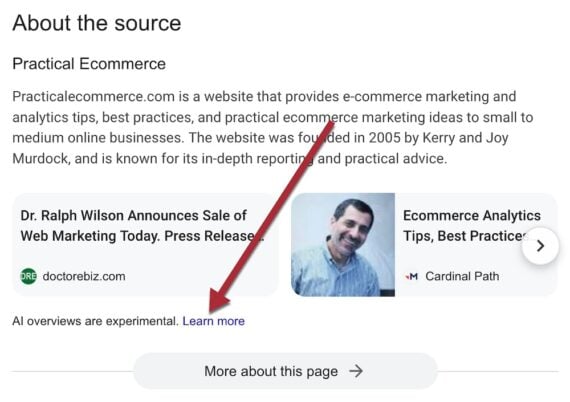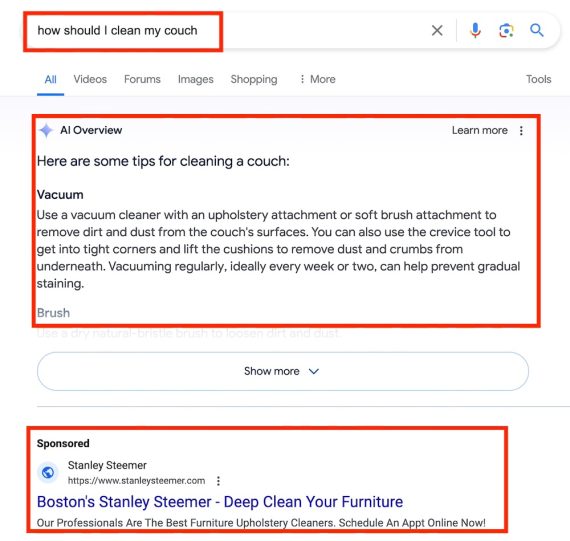Google provides an “About this result” panel for organic listings. It appears behind the three dots to the right of every organic result and contains data about that page.
The panel does not appear on blended results, such as “stores,” “news,” and “Interesting finds.” Sometimes the only way to tell organic results from other listings is via the three dots.

Google’s “about” panel appears behind the three dots of every organic search result.
The panel may vary slightly, but it generally includes the following sections.
Options to Interact
The top section links to the page and provides options to share it on social media, save it, remove it from your personalized results, and provide feedback.

The top section links to the page and provides options to interact with it.
Search engine practitioners debate whether these options provide additional ranking data to Google. For example, could a page rank higher if enough people saved or shared it?
I’ve seen no direct confirmation from Google, but manipulating these signals (e.g., recruiting folks to save URLs or post negative feedback on a competitor) is a bad idea.
‘About the source’
This section contains summary info about the site. The sources are usually from the site itself or Wikipedia, although I’ve also seen AI-generated snapshots in this section.

“About the source” contains summary info about the page and site.
Click the “More about this page” button for more detail, such as:
- An in-depth description of the site (sometimes AI-generated),
- Social media channels,
- Author’s name and social media accounts,
- Reviews of the site or brand,
- Other pages mentioning the site,
- The domain age and SSL certificate,
- When it was indexed,
- Wayback archive (this recently replaced a link to Google Cache).
Check this page regularly to review what Google knows about your site and its competitors.
‘About this search’
This section contains Google’s rationale for ranking the page for the search query. Example info includes:
- Whether it is a personalized result,
- Keywords (including related keywords) on the page matching the query,
- Publish date,
- Relevant images,
- Links from relevant pages,
- Images on those relevant pages,
- Alignment with the searcher’s language and location.
For example, I searched “best waterfall trails in NY.” One of the panels included the following (I added the bold text):
- “These search terms appear in the result: best, waterfall, trails.”
- “Terms related to your search in the result: highest, waterfalls, falls, new york.”
- “This result has images related to your search.”
- “This result was published or updated recently.”
- “Other websites with your search terms link to this result.”
- “The result is in English.”
- “This result seems relevant for searches from: United States.”
Search on key queries and then check this section for higher-ranking pages. Note their keywords and other potential factors, such as recency and visuals.






